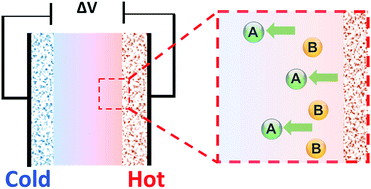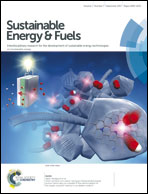Thermal charging of supercapacitors: a perspective
Abstract
Thermally-induced self-charging of electrochemical capacitors is a recently reported phenomenon, whereby a change in the temperature of a supercapacitor can lead to the generation of a voltage difference across the device. The temperature change is induced for all the device or only some of its components, unaided by or in combination with other voltage-inducing effects. This phenomenon is based on old and known physical concepts, whose use for energy generation became possible due to the advent of nanomaterials. The purpose of this article is to present the research conducted on this phenomenon, and offer a prospective direction for further progress in the field. First, we briefly introduce the existing heat-to-electricity conversion technologies, and their underlying principles. Then, we examine the main thermally-induced phenomena occurring in the environment of an ionic electrolyte, and/or a solid–liquid interface. After that, we review the studies conducted on thermally-induced self-charging in electrochemical capacitors, and the performance factors investigated so far. Finally, we present the future prospects of this field in the form of questions to address, additional factors to inspect, and materials of potential benefit for the design of thermally-chargeable supercapacitors.



 Please wait while we load your content...
Please wait while we load your content...